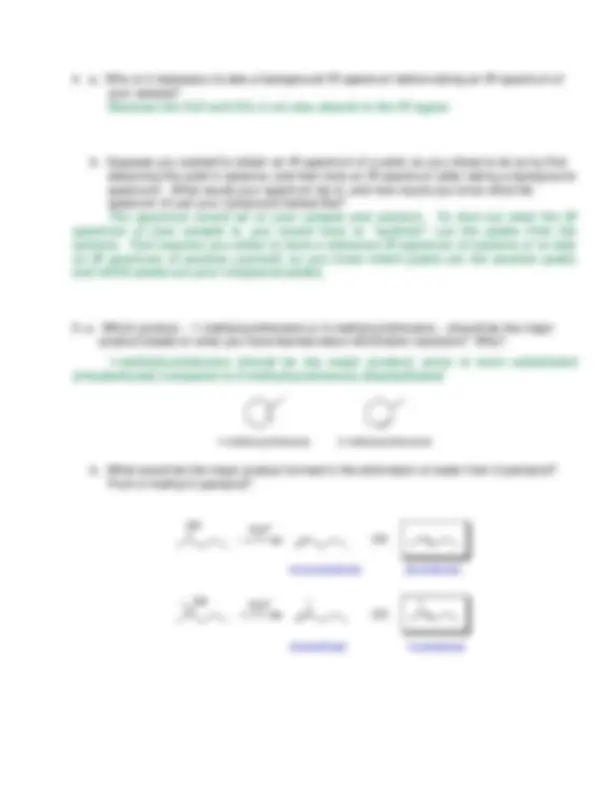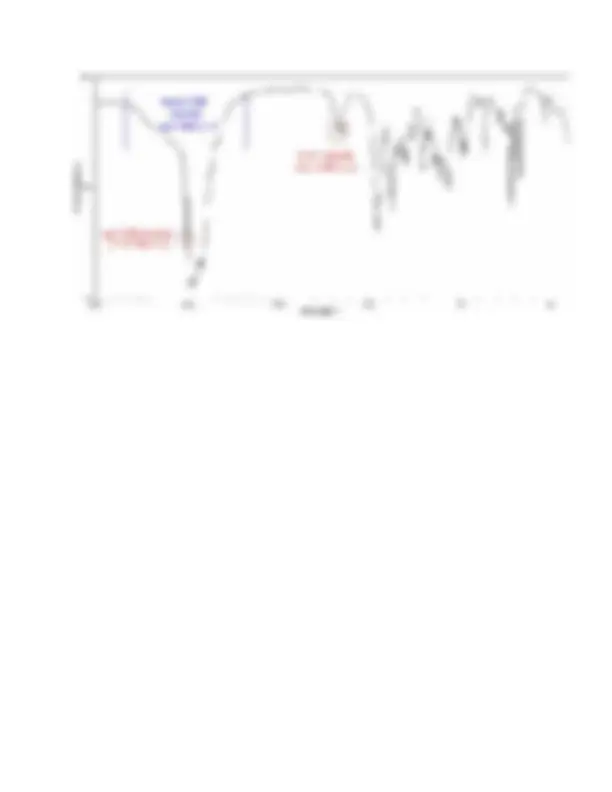




Study with the several resources on Docsity

Earn points by helping other students or get them with a premium plan


Prepare for your exams
Study with the several resources on Docsity

Earn points to download
Earn points by helping other students or get them with a premium plan
Community
Ask the community for help and clear up your study doubts
Discover the best universities in your country according to Docsity users
Free resources
Download our free guides on studying techniques, anxiety management strategies, and thesis advice from Docsity tutors
A report sheet for experiment 10 in chm 2435, focusing on ir spectroscopy and gc analysis. The experiment involves analyzing the retention times, peak areas, and percent compositions of 1-methylcyclohexene and 3-methylcyclohexene using gc. Additionally, ir spectra are taken to identify the presence or absence of specific functional groups. Questions include gc separation properties, starting material retention time, and ir spectroscopy peak identification.
Typology: Lab Reports
1 / 4

This page cannot be seen from the preview
Don't miss anything!



CHM 2435 Name: Experiment 10 IR Spectroscopy and GC Analysis Report Sheet Date:
A. Conditions for GC Analysis:
1-methylcyclohexene: 1.90 min
B. GC Analysis:
1-methylcylcohexene 3-methylcyclohexene
C. Attach your chromatogram to this report sheet, and label the following items:
Injection point Peak for 1-methylcyclohexene Peak for 3-methylcyclohexene Retention time for 1-methylcyclohexene Retention time for 3-methylcyclohexene
D. Attach your IR spectrum of the alkene mixture, and label the peaks that indicate the presence of an alkene in your mixture. Also label the absence or presence of peaks that indicate the presence of an alcohol in your mixture. see last page
OH
O
H
O + OH a.
the starting material would be the only compound that would have both the carbonyl C=O at 1700-1800 cm-1^ and the broad OH past 3000 cm-1. The first product (the aldehyde) would only have the C=O at 1700-1800 cm-1^ but not the OH, while the second product (the alcohol) would only have the broad OH past 3000 cm-1^ but not the C=O.
b.
the product would lack the C=C at 1600-1680 cm-1. (Note that the starting material has some sp^3 CH’s, so you cannot tell from this peak if it is starting material or product)
O
H c.
the starting material would have a carbonyl C=O at 1700-1800 cm-1^ while the product would have a C=C at 1600-1680 cm-